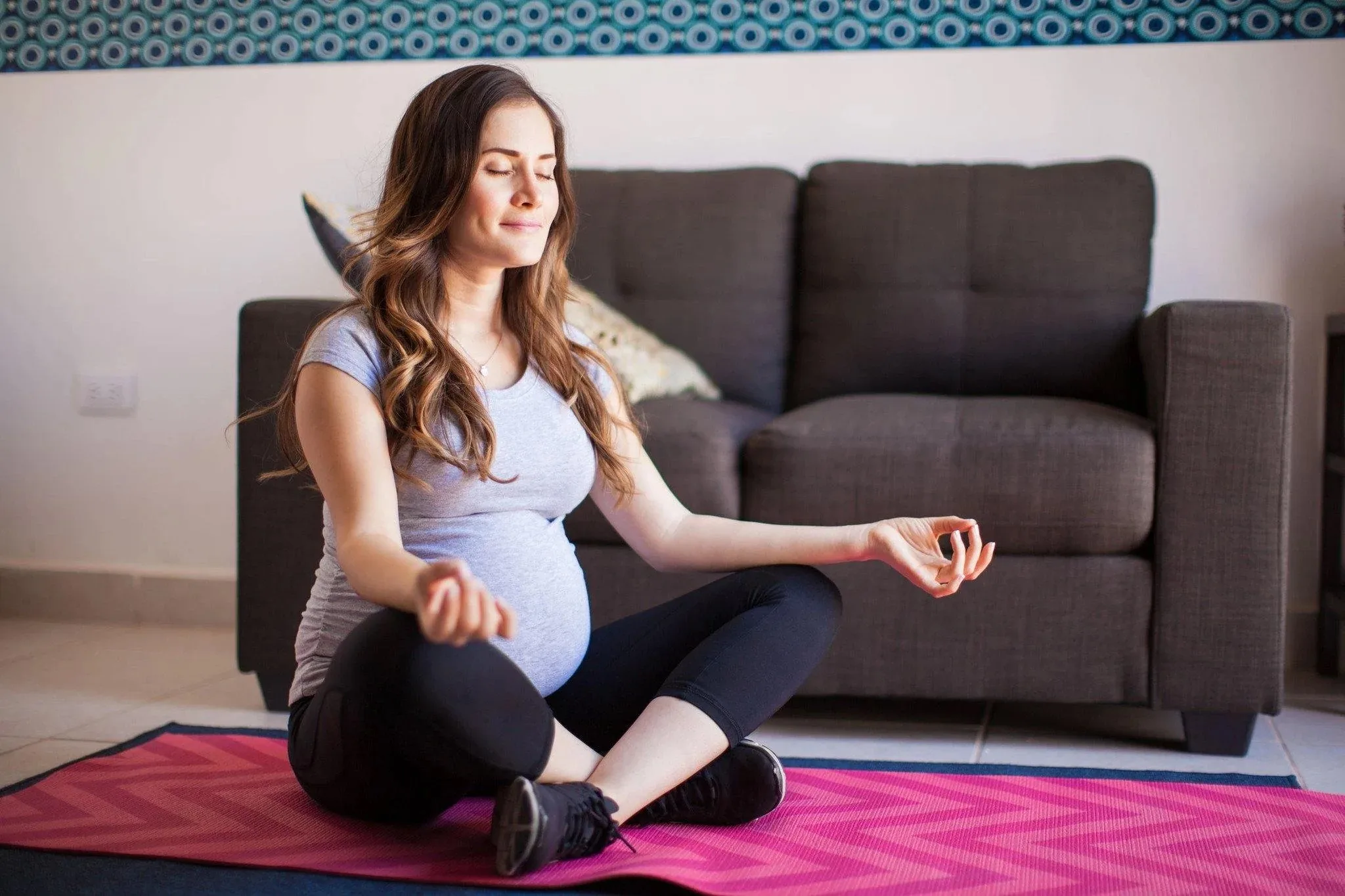In today’s blog, we’re going to talk about using breathing for pain relief during labor.
I’ve been doing labor-management training and videos about the effects of different comfort measures on pain during labor.
In this blog, we’re going to focus on the effects of breathing exercises for labor, also called “labor breathing” for pain relief during childbirth. Breathing techniques for labor focus on something called psycho prophylaxis, which refers to teaching parents how to respond to contractions with relaxation and breathing during labor.
How do breathing exercises during labor and relaxation techniques for labor, together work better to help manage pain and promote comfort?
There are many ways labor breathing ways for pain relief during:
- Labourbreathing techniques are also important for pain management, it works by interrupting the transmission of pain signals to the brain by giving something positive to focus on.
- It may also work by stimulating the release of endorphins, which are natural pain-relieving hormones.
- By helping you reframe your thinking about labor so that you view it as positive, productive, and manageable.
- Using breathing techniques and focusing attention on your breath may activate mental processes in your brain that make labor sensations seem less unpleasant.
- Breathing techniques are a body-mind training mechanism that is used by people around the world for stress relief.
Belly Breathing
There has been a lot of research around the world, especially on something called belly breathing, or diaphragmatic breathing. In this method, as you inhale or breathe in, the abdomen goes out, and as you exhale, the belly goes back in, and this is slow controlled breathing.
Abdominal breathing
Abdominal breathing is an important component of yoga and meditation. Through ECGstudies it is found, that just a few minutes of belly breathing positively alter brain waves, increases relaxation response, decreases stress hormones, and blood pressure, and even increases oxygen levels. Breathing was first brought into focus by Lamaze well known for Psych prophylaxis in Obstetrics. Lamaze taught women how to use strict, controlled breathing patterns to cope with labor sensations. Lamaze Breathing is so important that every pregnant woman needs to know and practice.
Lamaze Breathing Techniques for Easy Childbirth
The Lamaze method is easy to learn, and it is an important comfort strategy available to you.
What is Lamaze?
In ‘Lamaze’ breathing is just part of the Lamaze method used in labor breathing. Lamaze is a full program for building confidence and keeping things simple for a safe, healthy birth. Lamaze is one of the best breathing techniques for labor. ‘Lamaze’ is a breathing technique based on the idea that controlled breathing can enhance relaxation and decrease the perception of pain.
Some of the important points of the Lamaze breathing technique during labor are:?
- Slow, deep breathing.
- Maintaining a rhythm.
- Breathing through your mouth or nose.
- Keeping your eyes open or closed.
- Focusing on one item, such as a photograph of a baby’s sonography or your husband/elder child / your favourite place.
The other labor comfort strategies recommended to make the breathing techniques more effective include:
- Changing positions.
- Moving.
- Slowly dancing.
- Massage.
The key to using breathing for pain relief during labor is that breathing should be conscious, not automatic. So, in other words, it’s a behavioral, or voluntary thing to focus on your breathing. Breathing, however, is usually not used by itself. It’s typically combined with other relaxation methods such as guided imagery, visualization, hypnosis, continuous labor support, or progressive muscle relaxation. All in all, breathing and relaxation techniques practiced during labor, help in having confidence, learning, and active participation in your labor process.
These are four types of breathing that can be practiced during pregnancy and used for labor management which are as below:
1. Deep Breathing
- Gentle breathing in through the nose and slowly breathing out through the mouth.
- Can be used for relaxation between contractions.
- Use it at the beginning and end of each contraction as an organizing breath.
2. Chest Breathing
- Place one hand around the lower rib and other on the abdomen.
- Breath in and feel chest rising.
- Breath out gently through the mouth.
- This is helpful to get more oxygen and keep you comfortable, relaxed and able to manage contractions.
3. Shallow Breathing
- Breath in gently up to the small hollow in your throat.
- Breath out through the mouth.
- Shallow breathing helps to relax abdominal and perennial muscles.
4. Breath Holding
The second stage of labor needs strength, stamina and breath — holding capacity practicing breath-holding during pregnancy is important.
- Sit cross-legged.
- Take a deep breath in through the nose.
- Breath out fully through mouth.
- Take another deep breath and hold.
- When you can’t hold note time and breath out through your mouth.
- Increase capacity to a minimum of 40-45 seconds.
Now let us move forward and see how, and what exactly to practice Lamaze’s breathing techniques during Stages of labor.
STAGE 1- Cervical Effacement
In effacement, the cervix becomes thinner and the two lips of the cervix move away from each other. Till your contractions last for a maximum of 20 seconds we can take it as early stage.
Breathing Patterns:
- Deep breath in beginning.
- Chest breaths when contractions are going on.
- Deep breath at the end of the contraction.
It is important to begin and end the contraction with deep breaths. As if preparing body and mind.\
0-5 cms Cervical Dilatation
At the end of effacement dilatation, i.e. opening of the Cervix begins. Cervix gradually dilates up to 5 cms.
Practicing breathing with the husband will be very useful. For practice during pregnancy breathing pattern is to be practiced for 40 seconds.
The breathing pattern is –
- Deep breath.
- Chest breaths.
- Shallow breaths till the intensity of contraction is high.
- Then 2 chest breaths.
- Deep breath at the end.
Dilatation 5-10 cms
It is a difficult stage so you need to concentrate more on Breathing and Relaxation.
The breathing pattern is –
- Deep Breath.
- Chest breaths.
- Shallow breaths with an open mouth and one chest breath.
- Shallow -one chest to be continued.
- Chest breaths.
- Deep breath when contraction is complete.
Counting and shallow breathing help to control the urge to push.
STAGE 2 – Childbirth
Contraction lasts for 60 – 70 sec.
The breathing pattern is –
- Deep breathand breath out fully.
- Take a deep breath again and hold it, while pushing.
- Release breath only up to chest level.
- Take a deep breath and hold it to continue bearing down.
- Take a deep breath at the end of the contraction.
The more you practice breath holding during pregnancy the better you will be able to hold your breath and push during labor. Progressive muscle relaxation, breathing techniques, position changes, additional support from nurses/husband/family, and massage, practicing Lamaze breathing, this multi-component relaxation intervention significantly lowered women’s perceived pain intensity at two centimetres as well as at four, six, eight and ten centimetres. The multi-component relaxation intervention provides a greater sense of pain relief and comfort during birth.
If you’re pregnant, go for regular check-ups with your doctor to ensure optimum health for you and your baby. During one of those visits, you can discuss comfort strategies such as Lamaze breathing.
Conclusion
Breathing in combination with other variety of comfort measures is beneficial as they work best in combination to help you manage your labor better. So, join childbirth classes, learn and practice during pregnancy, by yourself and also with your husband, and make yourself “Birth Ready”.
Reference:
https://www.parents.com/…
https://www.healthline.com/…
https://evidencebasedbirth.com/…
https://www.webmd.com/…










Leave A Comment